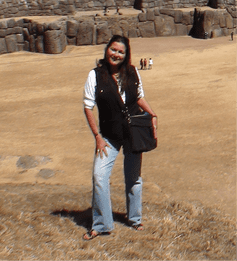 I have not been to Peru in several years despite the fact that the Ministry of Culture in Peru and the residents of the Saqsaywaman Archaeological Park still want me there to continue my research. Raising money has been the main issue, but I'm are getting close to my goal and I'm bound and determined that 2019 will be the Year!!! The situation at Saqsaywaman has changed significantly and I'm looking forward to going down and reporting in (with my camera) on the status of this important Peruvian archaeological site. Questions for my research include 1) Does the conflict between the Ministry and the communities who live on the active archaeological site continue? 2) Has a solution been found to keep communities on their land while preserving archaeological sites? 3) Have the communities been able to "modernize" in a way that doesn't threaten the integrity of the archaeological record? I've put a little slide show together to show you Saqsaywaman (below)...an archaeological site just above Cusco, Peru. This site was the epicenter of the Inca empire and it remains a flash point for the descendants of the Inca and the management of Peruvian heritage by the Ministry of Culture. Can't wait to go! Thanks in advance for your support by sharing this blog, subscribing via the RSS feed to the right, and your continued interest in my work. Onward....Maren Elwood
2 Comments
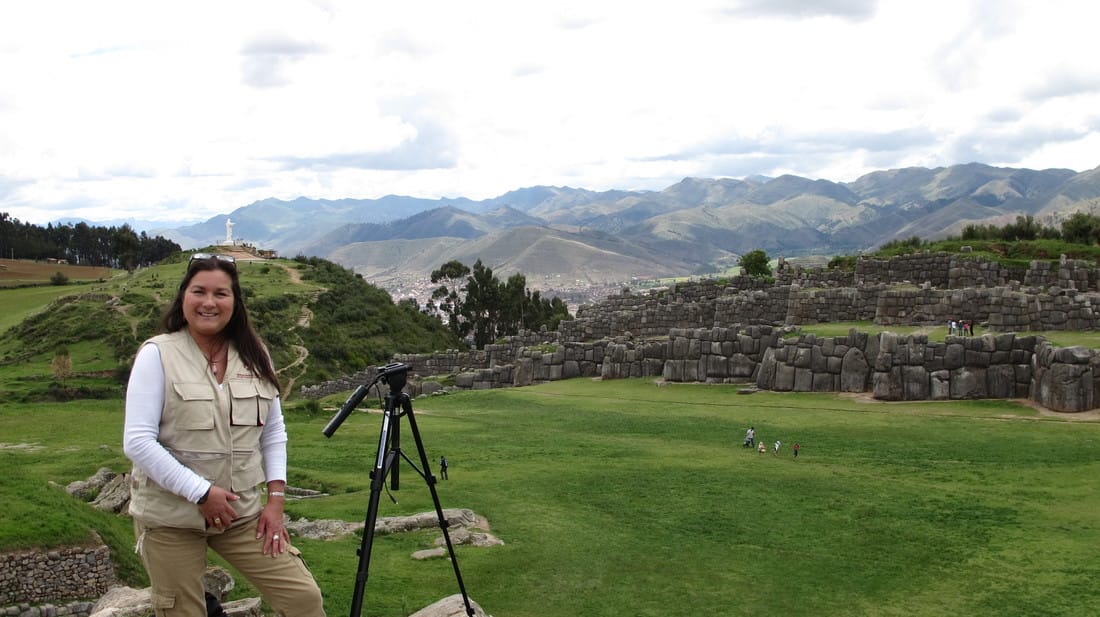 Maren Elwood filming at Saqsaywaman in 2013 Maren Elwood filming at Saqsaywaman in 2013 As we cycle into a New Year, my thoughts turn to the many mysteries around the world that play out in stone and entice us to unravel the stories of people in our past. As a visual anthropologist, I look for themes...patterns...clues in the visual data I collect during my research. As many of you know, my focus for many years has been on the archaeological site in Peru called Saqsaywaman. This site it known for it's megalithic, polygonal walls fit so well together as to defy our attempts to understand how they were constructed. COMMON THEMES |
| |
|
Is It Possible That The Solutions Reached at Chaco Canyon Can Serve As A Starting Point For Saqsaywaman?
It is my belief, based on my research, that this case study (documented in a Getty publication entitled Heritage Values in Site Management - Four Case Studies) provides a starting point from which the Ministry of Culture in Peru can develop it's own Values Based Site Management Plan.
When I go down to Peru later this year, I hope to start the process of putting together an Academic Conference to bring the descendants of the Inca to meet the Pueblo Indian stakeholders in Chaco Canyon, as well as the the U.S. National Park System staff so they all can learn from each other. In my wildest dreams this conference would happen sometime in 2018 and the resulting learning would assist the Ministry of Culture in Peru and the residents of the Saqsaywaman site to develop their own Values Based Assessment of the Peruvian site.
It is my hope that my work as an ethnographic researcher and filmmaker will add a layer of richness to the "Values Based Assessment" of Saqsaywaman. Ultimately, my research is designed to answer the question:
Can ethnographic film be a tool for Values Based Archaeological Site Management?
It is my belief, based on my research, that this case study (documented in a Getty publication entitled Heritage Values in Site Management - Four Case Studies) provides a starting point from which the Ministry of Culture in Peru can develop it's own Values Based Site Management Plan.
When I go down to Peru later this year, I hope to start the process of putting together an Academic Conference to bring the descendants of the Inca to meet the Pueblo Indian stakeholders in Chaco Canyon, as well as the the U.S. National Park System staff so they all can learn from each other. In my wildest dreams this conference would happen sometime in 2018 and the resulting learning would assist the Ministry of Culture in Peru and the residents of the Saqsaywaman site to develop their own Values Based Assessment of the Peruvian site.
It is my hope that my work as an ethnographic researcher and filmmaker will add a layer of richness to the "Values Based Assessment" of Saqsaywaman. Ultimately, my research is designed to answer the question:
Can ethnographic film be a tool for Values Based Archaeological Site Management?
YOU CAN HELP GET MAREN AND HER CREW BACK TO PERU
Many of you have contributed to my Peru Fundraising efforts and I so VERY much appreciate that. I have raised about $3,500 so far. I really need to raise almost $10,000 to get down to Peru with a small team of people. I am seeking grants and corporate funding as well. So, if you are inclined to donate, I'd appreciate it. And please feel free to share this blog and my website with anyone you think might be interested. Links are below...and you can share this blog as well.
Thanks so much for your time reading this blog...and for whatever help you can give me to continue my work in Peru.
Sincerely,
Maren Elwood
Visual Anthropologist
"Stone & People" Project
831 238 5503
Thanks so much for your time reading this blog...and for whatever help you can give me to continue my work in Peru.
Sincerely,
Maren Elwood
Visual Anthropologist
"Stone & People" Project
831 238 5503
| You can send a check to: Maren Elwood 11006 Aletta Avenue Culver City, CA 90232 |
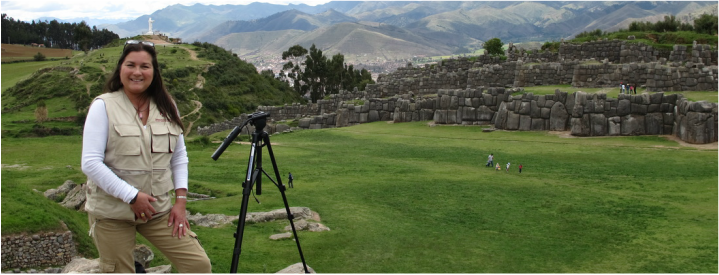
Thanks for visiting my blog and keeping up with the progress on this ethnographic research project on the archaeological site in Peru called Saqsaywaman. A lot has happened since my last blog. I'm getting closer to going to Peru to continue my research to see if ethnographic film can play a role mediating a conflict on an archaeological site. Here's what's NEW:
Formal Request Received From The
Ministry of Culture in Peru
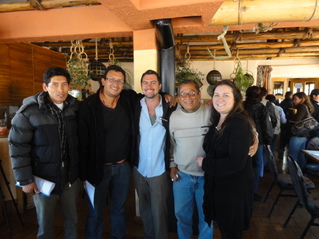
My contact at the Ministry is Jose Antonio Reynoso, the second from the left in this photo. We have been Facebook messaging (yes...social media has been our primary way to communicate up to now.) I asked him to send me a formal email outlining the status of the conflict at the Saqsaywaman site. I received his email (in Spanish) and used Google Translate to view his reply. You can view his entire letter to me at the bottom of this blog.
Current State of The Crisis on Site: When we first started our research and filming on the archaeological site back in 2010, the primary conflict was with three communities wanting to modernize, build houses, install infrastructure, roads, and enter the 21st Century on an active archaeological site. The update from the Jose Antonio at the Ministry makes it clear that the conflict has now expanded to the surrounding Cusco area, with the city expansion now encroaching on the archaeological park. This UNESCO World Heritage site is under threat now from many sides and groups. Our work to mediate the situation on the site is needed more now than every!
Current State of The Crisis on Site: When we first started our research and filming on the archaeological site back in 2010, the primary conflict was with three communities wanting to modernize, build houses, install infrastructure, roads, and enter the 21st Century on an active archaeological site. The update from the Jose Antonio at the Ministry makes it clear that the conflict has now expanded to the surrounding Cusco area, with the city expansion now encroaching on the archaeological park. This UNESCO World Heritage site is under threat now from many sides and groups. Our work to mediate the situation on the site is needed more now than every!
Maren's Status As A Research Associate At USC Renewed
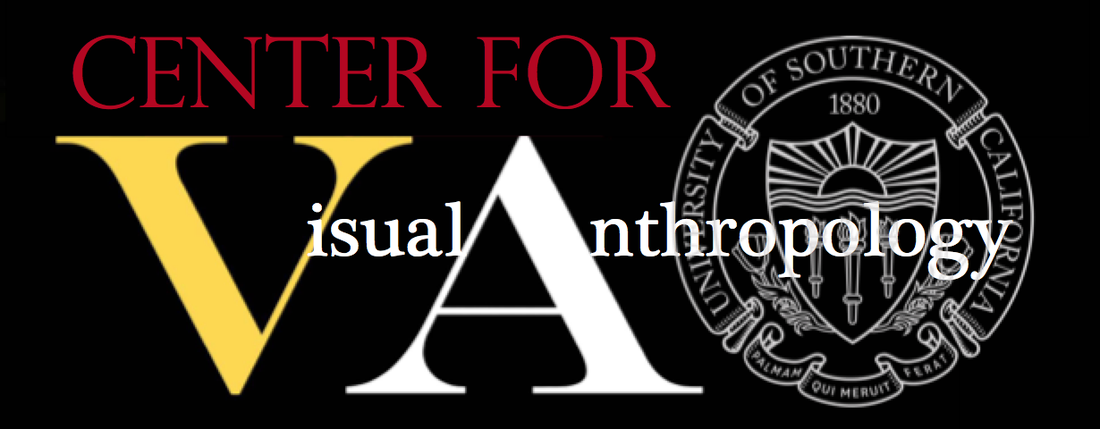
Last week, my status as a Research Associate at the Center for Visual Anthropology at the University of Southern California (USC) was renewed by the Chair of the Department, Dr. Gary Seaman. This was a critical step as I can't work down at Saqsaywaman without a formal affiliation with a major U.S. university.
Maren Granted Access To The
Getty Research Institute Library
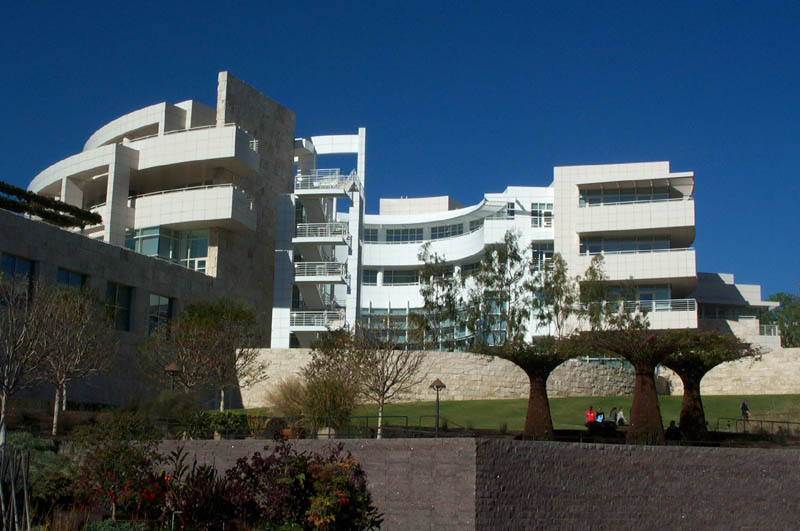
Those of you who have been down to Los Angeles to the Getty Museum complex know how amazing this institution is. The "Getty," as it is known, not only has world class museums, but the complex also houses the Getty Conservation Institute...and it's associated Research Library. (The library is located on the left in the photo above.)
I have been granted the use of the research library so I can continue to flesh out the research proposal, which I'm hoping will become part of my Ph.D thesis. Without going into too much detail (for another blog), I hope to partner with the Getty Conservation Institute (GCI) to bring stakeholders at Saqsaywaman to the GCI to benefit from their expertise in archaeological site management. My ultimate goal would be to design and host an academic conference bringing these two diverse groups of people to together to come up with solutions for the Saqsaywaman site.
I have been granted the use of the research library so I can continue to flesh out the research proposal, which I'm hoping will become part of my Ph.D thesis. Without going into too much detail (for another blog), I hope to partner with the Getty Conservation Institute (GCI) to bring stakeholders at Saqsaywaman to the GCI to benefit from their expertise in archaeological site management. My ultimate goal would be to design and host an academic conference bringing these two diverse groups of people to together to come up with solutions for the Saqsaywaman site.
Donations Are Still Needed $1500 of $10,000 Raised
Many of you have contributed to my Peru Fundraising efforts and I so VERY much appreciate that. I have raised about $1,500 so far. I really need to raise almost $10,000 to get down to Peru with a small team of people. I am seeking grants and corporate funding as well. So, if you are inclined to donate, I'd appreciate it. And please feel free to share this blog and my website with anyone you think might be interested. Links are below...and you can share this blog as well.
Thanks so much for your time reading this blog...and for whatever help you can give me to continue my work in Peru.
Sincerely,
Maren Elwood
Visual Anthropologist
"Stone & People" Project
831 238 5503
Thanks so much for your time reading this blog...and for whatever help you can give me to continue my work in Peru.
Sincerely,
Maren Elwood
Visual Anthropologist
"Stone & People" Project
831 238 5503
| You can send a check to: Maren Elwood 11006 Aletta Avenue Culver City, CA 90232 |
Letter to Maren Elwood From Jose Antonio Reynoso
Secretary at the Ministry of Culture/Saqsaywaman
(Translated from Spanish by Google Translate)
Maren,
Hello (and) how are you? First of all, excuse delay in answer, as you know the main problems in the Archaeological Park of Sacsayhuaman (PAS) communities and groups that inhabit it as the need for housing for themselves and their children is what makes the PAS is growing in housing.
Also the problem of PAS to be near Cusco which makes it vulnerable to urban growth of the city that no longer have to grow up and see the PAS as a place of urban expansion, and we are trying to stop this so that PAS all its green area and heritage within it there is enough (more than 66 archaeological sites registered) is maintained, we are working with the regional government of Cusco for the PAS is referred to as "lungs of Cusco". We are also trying to see how to acquire land from private owners, as you know the state owns only 5% of the 2,997 hectares that have the PAS.
Cusco is growing not only in terms of population but also is increasing tourism and thus various needs including more tourist offers, need for more accommodation generated more sites recreation (horseback riding, motorcycling, mountain biking, climbing rock and others that are being generated within the PAS.)
If you want more information and want to know what topics to be more explicit let me know because I would like to continue working on the project which had begun in 2010.
Regards,
Jose Antonio Reynoso
Hello (and) how are you? First of all, excuse delay in answer, as you know the main problems in the Archaeological Park of Sacsayhuaman (PAS) communities and groups that inhabit it as the need for housing for themselves and their children is what makes the PAS is growing in housing.
Also the problem of PAS to be near Cusco which makes it vulnerable to urban growth of the city that no longer have to grow up and see the PAS as a place of urban expansion, and we are trying to stop this so that PAS all its green area and heritage within it there is enough (more than 66 archaeological sites registered) is maintained, we are working with the regional government of Cusco for the PAS is referred to as "lungs of Cusco". We are also trying to see how to acquire land from private owners, as you know the state owns only 5% of the 2,997 hectares that have the PAS.
Cusco is growing not only in terms of population but also is increasing tourism and thus various needs including more tourist offers, need for more accommodation generated more sites recreation (horseback riding, motorcycling, mountain biking, climbing rock and others that are being generated within the PAS.)
If you want more information and want to know what topics to be more explicit let me know because I would like to continue working on the project which had begun in 2010.
Regards,
Jose Antonio Reynoso
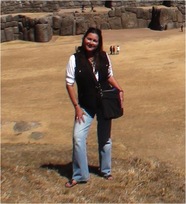
So many people have asked me if I'm taking my Airstream to Peru. So, I decided to explore the pros and cons and what would be involved in actually taking my Classic Airstream 325 RV to Saqsaywaman.
For those of you who don't know me, I'm known as the Airstream Anthropologist because I use my Airstream to conduct research studies around the United States. Now, I'm getting ready to continue research on a site in Peru called Saqsaywaman. For more info about this study, go to my Stone & People webpage.
Pros: First of all, the Airstream is totally equipped as my mobile media lab. So, it would be a great to transport my office complete with all the tech needed to complete my ethnographic research on the Saqsaywaman site. I could upload project video to the internet via satellite. I could edit ethnographic film in-situ. I could entertain both community members and the Ministry of Culture by making Peruvian delights (like beef heart) in my gourmet kitchen. We could sit outside under the stars at night and, following in Ansel Adams's footsteps, setup a GoPro atop the Airstream to capture timelapse photography of the sun and moon rising above what used to be the Epicenter of the Inca Empire.
Another pro would be the fact that the Airstream has four solar panels, so I could live off the grid and keep my carbon footprint on the site to a minimum. The oversized water and holding tanks would also mean I could stay in-situ for long periods of time.
Other benefits would include having all my equipment in one safe environment protected by my
Ring system that alerts me on my phone when someone is near the Airstream or ringing my door bell.
Personally, I'd love to have the Airstream down at Saqsaywaman. It's been my home since I went back to school in 2011 at USC...and I love living in it. It fits my mobile lifestyle as the Airstream Anthropologist.
For those of you who don't know me, I'm known as the Airstream Anthropologist because I use my Airstream to conduct research studies around the United States. Now, I'm getting ready to continue research on a site in Peru called Saqsaywaman. For more info about this study, go to my Stone & People webpage.
Pros: First of all, the Airstream is totally equipped as my mobile media lab. So, it would be a great to transport my office complete with all the tech needed to complete my ethnographic research on the Saqsaywaman site. I could upload project video to the internet via satellite. I could edit ethnographic film in-situ. I could entertain both community members and the Ministry of Culture by making Peruvian delights (like beef heart) in my gourmet kitchen. We could sit outside under the stars at night and, following in Ansel Adams's footsteps, setup a GoPro atop the Airstream to capture timelapse photography of the sun and moon rising above what used to be the Epicenter of the Inca Empire.
Another pro would be the fact that the Airstream has four solar panels, so I could live off the grid and keep my carbon footprint on the site to a minimum. The oversized water and holding tanks would also mean I could stay in-situ for long periods of time.
Other benefits would include having all my equipment in one safe environment protected by my
Ring system that alerts me on my phone when someone is near the Airstream or ringing my door bell.
Personally, I'd love to have the Airstream down at Saqsaywaman. It's been my home since I went back to school in 2011 at USC...and I love living in it. It fits my mobile lifestyle as the Airstream Anthropologist.
Getting The Airstream To Saqsaywaman
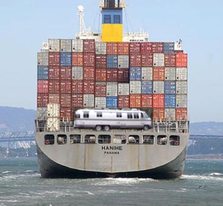
LOGISTICS: Getting my 1989 Airstream 325 to Saqsaywaman, Peru would involve some pretty long distances and test the vehicle's ability to climb the over 12,000' altitude gain. But, given that the Airstream has already been all across the United States, let's examine what would be involved in getting it to Peru.
There is precedence for this type of crazy endeavor by a filmmaker. Werner Herzog, during his ill-fated epic filming of Fitzcarraldo (the story of a man who dragged a steamship over a mountain and through the Peruvian Jungle), ran into amazing difficulties trying to recreate this story for film. If you want to read about the adventure Werner Herzog encountered, this article by Nick Thorpe "Herzog's Un-filmable Nightmare" is a good read.
Step #1) Vehicle Cargo Shipping By Boat: Yes, you can actually do this. I contacted a company based out of the Los Angeles Harbor and submitted my request (online) to ship my Airstream from LA to Lima, Peru. Cost estimate that I received back: $2700 + Insurance and duties.
So, the only thing I have to worry about is that someone on the boat will decide to take up residence in the Airstream and do damage/take parts while on the journey. Then there is the problem of rodents who've been known to eat everything including hoses and fan belts...let alone food (which I'd be sure isn't on board.)
Step #2) Permits & Licenses: I'd have to figure out what type of RV permits would be needed in Peru, as well as license the Airstream as a Peruvian vehicle. I'd also need to get permission for the Airstream to be parked somewhere on the Saqsaywaman archaeological park. Which, given that it's hard enough just to get an American ethnographic research/film crew on the site, this might be a BIG deal. Then again, they might like the publicity that would be generated by having the Airstream Anthropologist embedded on a UNESCO World Heritage site. Let's assume I will be granted a "Convenio" for the Airstream.
Step #3) Finding A Driver/Mechanic & Extra Parts: I would need to hire at least one great driver, who also has mechanical expertise with Airstream RVs. Why? Because, we are going to break down...if for no other reason than to make a great story. And, it's not like we are going to find an Airstream dealership with a parts department along the way. So, we will have to take some basic parts and lots of tools...which believe it or not, I have already on board.
Step #4) Preparations In Lima & Provisions: We'd need to stock up the Airstream after it's long boat ride, which would include filling the propane tank, getting fresh water into the holding tank, and making sure we have enough food for the trip from Lima to Cuzco. We'd need to give it a once over for the big drive and make sure all systems are ready to climb the Andes.
Step #4) Driving From Lima to Saqsaywaman: This drive, pictured below, is 931 miles if the roads indicated are available...which they probably won't be. So, let's just use this route and miles as a guesstimate. Google Maps estimates the trip to take 19 hours...Ha! Let's expect a week.
There is precedence for this type of crazy endeavor by a filmmaker. Werner Herzog, during his ill-fated epic filming of Fitzcarraldo (the story of a man who dragged a steamship over a mountain and through the Peruvian Jungle), ran into amazing difficulties trying to recreate this story for film. If you want to read about the adventure Werner Herzog encountered, this article by Nick Thorpe "Herzog's Un-filmable Nightmare" is a good read.
Step #1) Vehicle Cargo Shipping By Boat: Yes, you can actually do this. I contacted a company based out of the Los Angeles Harbor and submitted my request (online) to ship my Airstream from LA to Lima, Peru. Cost estimate that I received back: $2700 + Insurance and duties.
So, the only thing I have to worry about is that someone on the boat will decide to take up residence in the Airstream and do damage/take parts while on the journey. Then there is the problem of rodents who've been known to eat everything including hoses and fan belts...let alone food (which I'd be sure isn't on board.)
Step #2) Permits & Licenses: I'd have to figure out what type of RV permits would be needed in Peru, as well as license the Airstream as a Peruvian vehicle. I'd also need to get permission for the Airstream to be parked somewhere on the Saqsaywaman archaeological park. Which, given that it's hard enough just to get an American ethnographic research/film crew on the site, this might be a BIG deal. Then again, they might like the publicity that would be generated by having the Airstream Anthropologist embedded on a UNESCO World Heritage site. Let's assume I will be granted a "Convenio" for the Airstream.
Step #3) Finding A Driver/Mechanic & Extra Parts: I would need to hire at least one great driver, who also has mechanical expertise with Airstream RVs. Why? Because, we are going to break down...if for no other reason than to make a great story. And, it's not like we are going to find an Airstream dealership with a parts department along the way. So, we will have to take some basic parts and lots of tools...which believe it or not, I have already on board.
Step #4) Preparations In Lima & Provisions: We'd need to stock up the Airstream after it's long boat ride, which would include filling the propane tank, getting fresh water into the holding tank, and making sure we have enough food for the trip from Lima to Cuzco. We'd need to give it a once over for the big drive and make sure all systems are ready to climb the Andes.
Step #4) Driving From Lima to Saqsaywaman: This drive, pictured below, is 931 miles if the roads indicated are available...which they probably won't be. So, let's just use this route and miles as a guesstimate. Google Maps estimates the trip to take 19 hours...Ha! Let's expect a week.
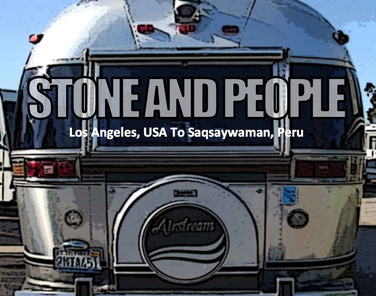
Fuel Expenses: Well, the Airstream currently gets a whopping 11 miles per gallon of regular gas in the US. (For those of you who don't own an RV...that's VERY good.) Given the extreme altitude gain, let's reduce the miles per gallon to 9...probably over estimating, but let's figure the Airstream is going to putt along slowly to get maximum mileage.
104 Gallons Of Fuel Needed: So, if the trip is 931 miles % 9 miles per gallons = 104 gallons of fuel will be needed.
$594.88 Will Be Cost of Fuel: Figuring out gas prices involves a currency exchange. The current gas price for regular gas in Lima is $4.84/gallon in Sols...the currency in Peru. In US dollars, the rate is $5.72/gallon...so 931 miles x $5.72 = $594.88 for gas. And...believe it or not, the Airstream has an 80 gallon gas tank...so, we could make it there on a tank and a half of gas with some to spare (if everything goes as planned...which it won't). What a vehicle!!
104 Gallons Of Fuel Needed: So, if the trip is 931 miles % 9 miles per gallons = 104 gallons of fuel will be needed.
$594.88 Will Be Cost of Fuel: Figuring out gas prices involves a currency exchange. The current gas price for regular gas in Lima is $4.84/gallon in Sols...the currency in Peru. In US dollars, the rate is $5.72/gallon...so 931 miles x $5.72 = $594.88 for gas. And...believe it or not, the Airstream has an 80 gallon gas tank...so, we could make it there on a tank and a half of gas with some to spare (if everything goes as planned...which it won't). What a vehicle!!
Weighing The Pros/Cons of Taking The Airstream To Peru
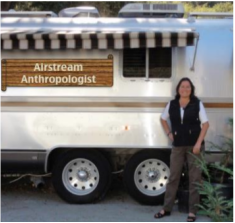
Overall, the costs of getting the Airstream to Peru might actually be worth it given the savings that would result from not having to rent a location for me and my crew. Last time we went down, it cost me almost $4K just for housing. And, we'd save money by being able to make our own meals in the Airstream.
Add to that the novelty and coolness factor of having an Airstream on an active archaeological dig where the researcher and her team live and work out of it....Wow! I'm sure there are Airstreams that have been used in the US on archaeological digs. But, I believe this would be the first time an Airstream would be used in Peru on an active dig high up in the Andes.
TOTAL COST ESTIMATE TO GET THE AIRSTREAM TO SAQSAYWAMAN $6,000 US
In conclusion, I think I'm going to give it a go! Then, the only thing I have to think about next is how I'm going to get it back...or does the Airstream stay permanently in Peru...and thus becoming the base of operation for the Stone & People project?
What do you think? Let me know...and, of course, make a donation if you can...definitely going to need it now.
Humorously submitted,
Maren Elwood
The Airstream Anthropologist
Join me on my company social networks below or on my
Airstream Anthropologist Facebook Page
Add to that the novelty and coolness factor of having an Airstream on an active archaeological dig where the researcher and her team live and work out of it....Wow! I'm sure there are Airstreams that have been used in the US on archaeological digs. But, I believe this would be the first time an Airstream would be used in Peru on an active dig high up in the Andes.
TOTAL COST ESTIMATE TO GET THE AIRSTREAM TO SAQSAYWAMAN $6,000 US
In conclusion, I think I'm going to give it a go! Then, the only thing I have to think about next is how I'm going to get it back...or does the Airstream stay permanently in Peru...and thus becoming the base of operation for the Stone & People project?
What do you think? Let me know...and, of course, make a donation if you can...definitely going to need it now.
Humorously submitted,
Maren Elwood
The Airstream Anthropologist
Join me on my company social networks below or on my
Airstream Anthropologist Facebook Page
| You can also mail a donation to: 11006 Aletta Avenue Culver City, CA 90232 |
For those of you who know me, you know that I grew up in Los Angeles and moved to Carmel about 25 years ago. Last week, I moved back to a city that has dramatically changed in those 25 years.
Culturally, which is the lens I always use, this city is now a CITY to rival NYC, CH, & SF. Little neighborhoods, like Korea Town and Culver City, are no longer fringe...they are the new "IT neighborhoods. Traffic, which was nearing "grid lock" when I left is now a pulse of humanity that you MUST learn to flow with.
This amazing timelapse, by a filmmaker named Colin Rich, does justice to the heartbeat of Los Angeles. If you imagine this CITY is a living being (which is how I think of our whole planet), you will see the heartbeat of Los Angeles is made up of cars, planes, spaces and people.
Culturally, which is the lens I always use, this city is now a CITY to rival NYC, CH, & SF. Little neighborhoods, like Korea Town and Culver City, are no longer fringe...they are the new "IT neighborhoods. Traffic, which was nearing "grid lock" when I left is now a pulse of humanity that you MUST learn to flow with.
This amazing timelapse, by a filmmaker named Colin Rich, does justice to the heartbeat of Los Angeles. If you imagine this CITY is a living being (which is how I think of our whole planet), you will see the heartbeat of Los Angeles is made up of cars, planes, spaces and people.
Despite the fact that I've been visiting Los Angeles for the last 25 years to see family, work, and just visit, I'm having culture shock! I've moved from an environment covered with trees and dotted with roads to a place on the earth where the vertical landscape is made up of those entities we call buildings and the network of roads and highways rivals the complexity of the Internet. The feeling of this CITY has edges that I'm not used to. And, now that I'm here for good (instead of visiting), I seem to be feeling them all.
I make my living using the Internet. I'm on the "net" all day...on my phone, on my tablet, on my laptop sitting at this Starbucks. So, the idea of a global network resonates with me. I believe we are all connected...sentient and non sentient beings alike. So, to find myself in Los Angeles (where my network is now more the later than the former) is a "WOW" moment.
I have always been connected to trees. I grew up in Silverlake, when it wasn't the chic place it is now here in Los Angeles. Our yard was covered with trees. My Dad used to teach us the names of the trees. I climbed in them. I picked up their leaves on Haul-It days. I ate from loquat trees, picked figs, and even found a plumb on a flowering plum tree that wasn't supposed to have fruit. (Bet my Dad $5 that it did come from that tree and waited a whole year to prove to him it did and win my $5.)
So, to come back to Los Angeles and find that many trees just don't live here anymore, is shockingly expected. Oaks are pretty much gone. Monkey Pod trees are struggling. Juniper have pods that are the size of capers. The huge pines that defined the canopy in my childhood yard are no more...they died years ago. The trees that thrive here are those that cooperate with buildings. Palms, Ficus, and light poles.
I'm connected. Despite being in a different web, the mind we call Google still connects me to the global mind. And, Facebook is always a good place for me to get messages from friends...and from the mind that hears my thoughts. So, it was no surprise when I received a FB share about Suzanne Simard's TED talk entitled "How Trees Talk To Each Other." Yes, we live in a web. On top of a web. We are not separate, but embedded in a global Intranet that so many of us don't realize we participate in.
I make my living using the Internet. I'm on the "net" all day...on my phone, on my tablet, on my laptop sitting at this Starbucks. So, the idea of a global network resonates with me. I believe we are all connected...sentient and non sentient beings alike. So, to find myself in Los Angeles (where my network is now more the later than the former) is a "WOW" moment.
I have always been connected to trees. I grew up in Silverlake, when it wasn't the chic place it is now here in Los Angeles. Our yard was covered with trees. My Dad used to teach us the names of the trees. I climbed in them. I picked up their leaves on Haul-It days. I ate from loquat trees, picked figs, and even found a plumb on a flowering plum tree that wasn't supposed to have fruit. (Bet my Dad $5 that it did come from that tree and waited a whole year to prove to him it did and win my $5.)
So, to come back to Los Angeles and find that many trees just don't live here anymore, is shockingly expected. Oaks are pretty much gone. Monkey Pod trees are struggling. Juniper have pods that are the size of capers. The huge pines that defined the canopy in my childhood yard are no more...they died years ago. The trees that thrive here are those that cooperate with buildings. Palms, Ficus, and light poles.
I'm connected. Despite being in a different web, the mind we call Google still connects me to the global mind. And, Facebook is always a good place for me to get messages from friends...and from the mind that hears my thoughts. So, it was no surprise when I received a FB share about Suzanne Simard's TED talk entitled "How Trees Talk To Each Other." Yes, we live in a web. On top of a web. We are not separate, but embedded in a global Intranet that so many of us don't realize we participate in.
I will adjust. I will find a way to relate to this concrete landscape. I will find my new network. After all, Carmel and Los Angeles are just one place...this place we call Earth. And, I will find my way in my new spot on our planet.
MAREN ELWOOD
Visual Anthropologist now living in LA...next stop...Chaco Canyon...then Peru.
Archives
March 2018
December 2016
October 2016
September 2016
August 2016
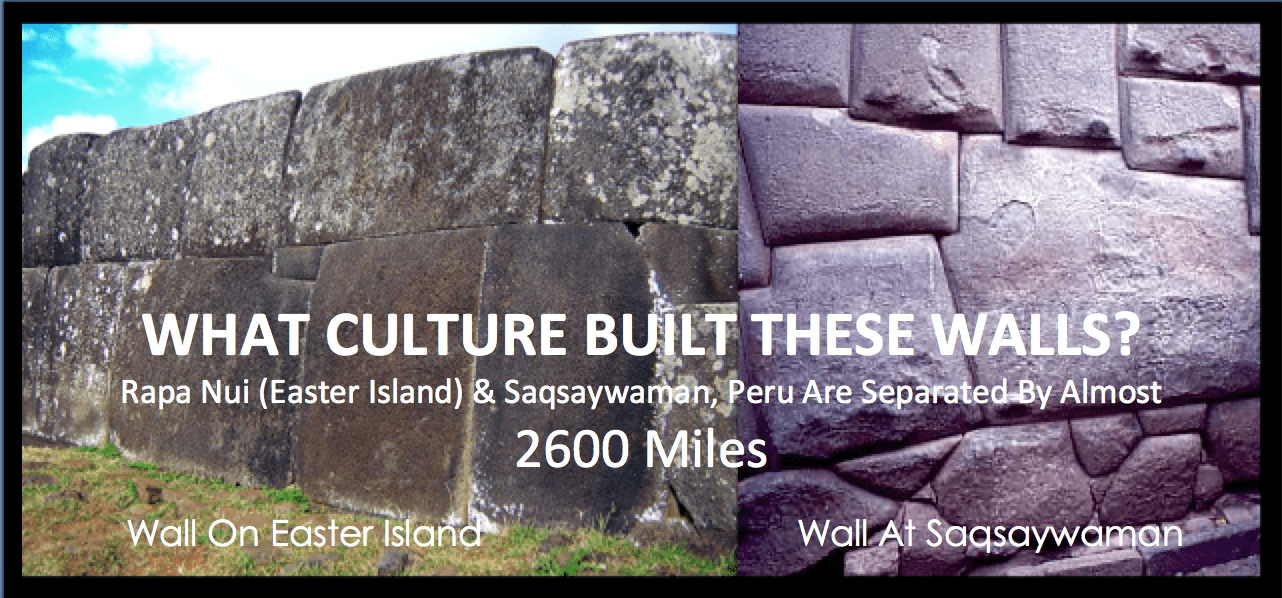
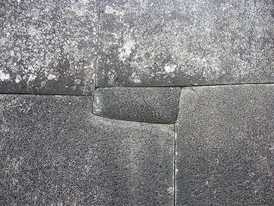
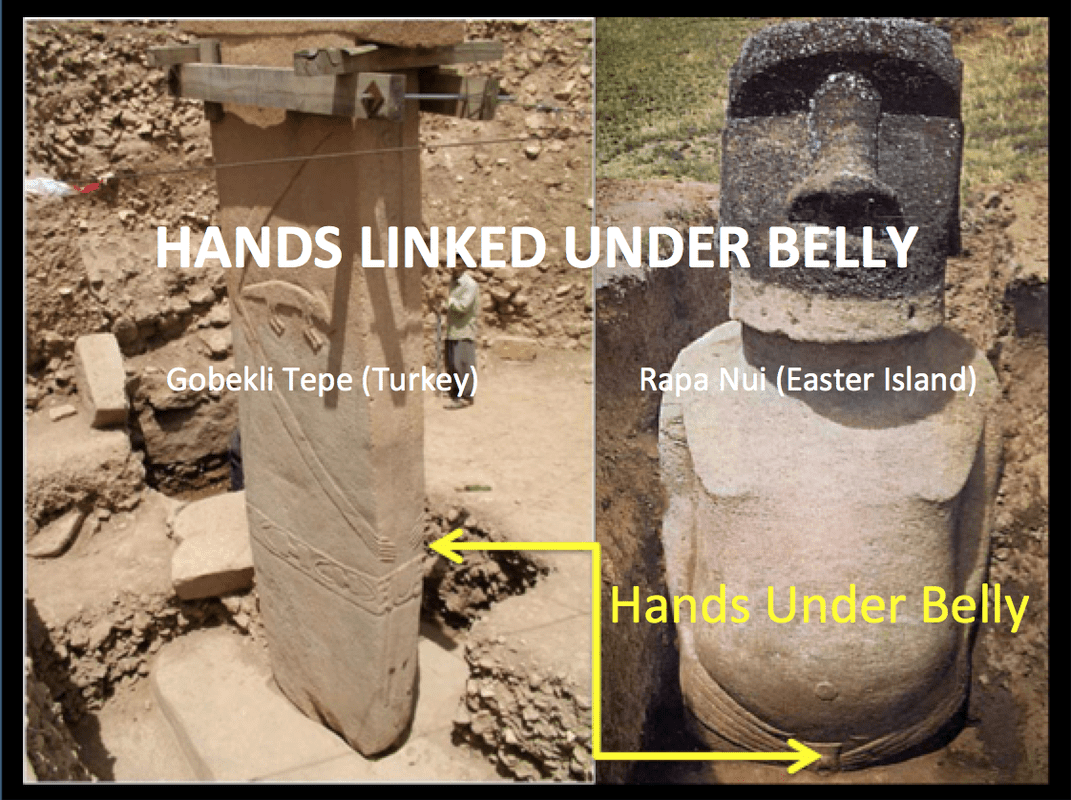
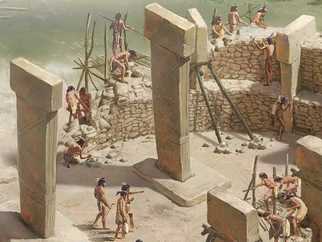
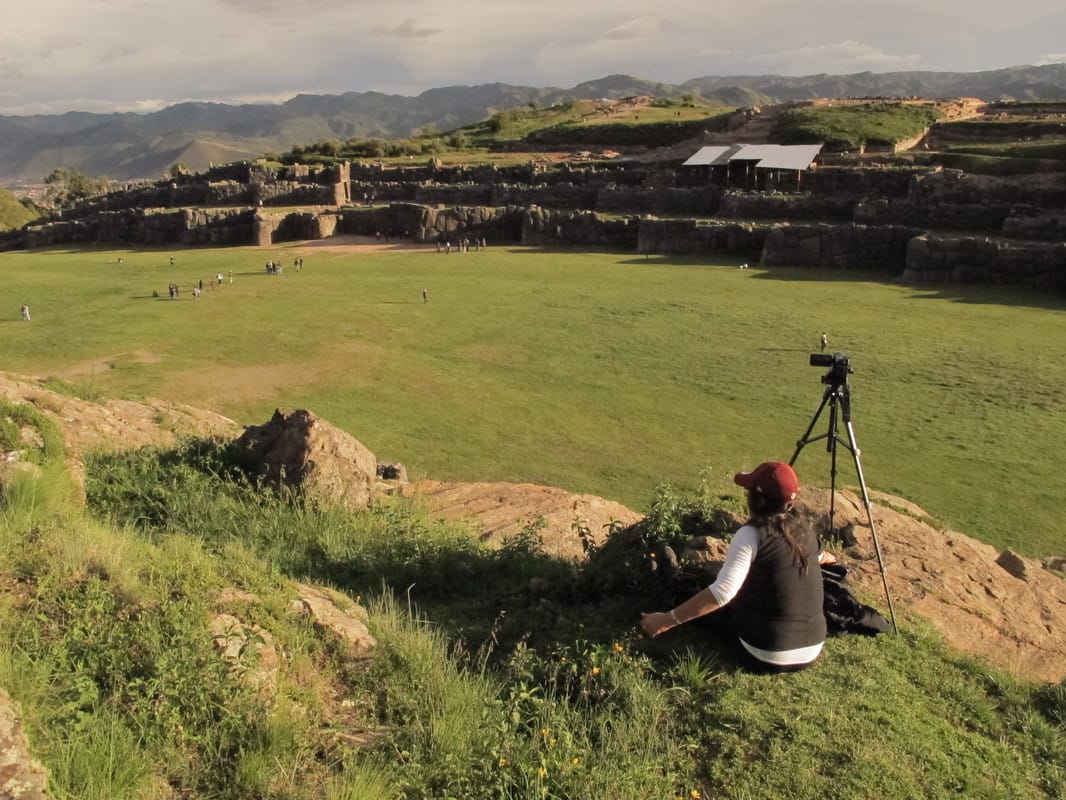
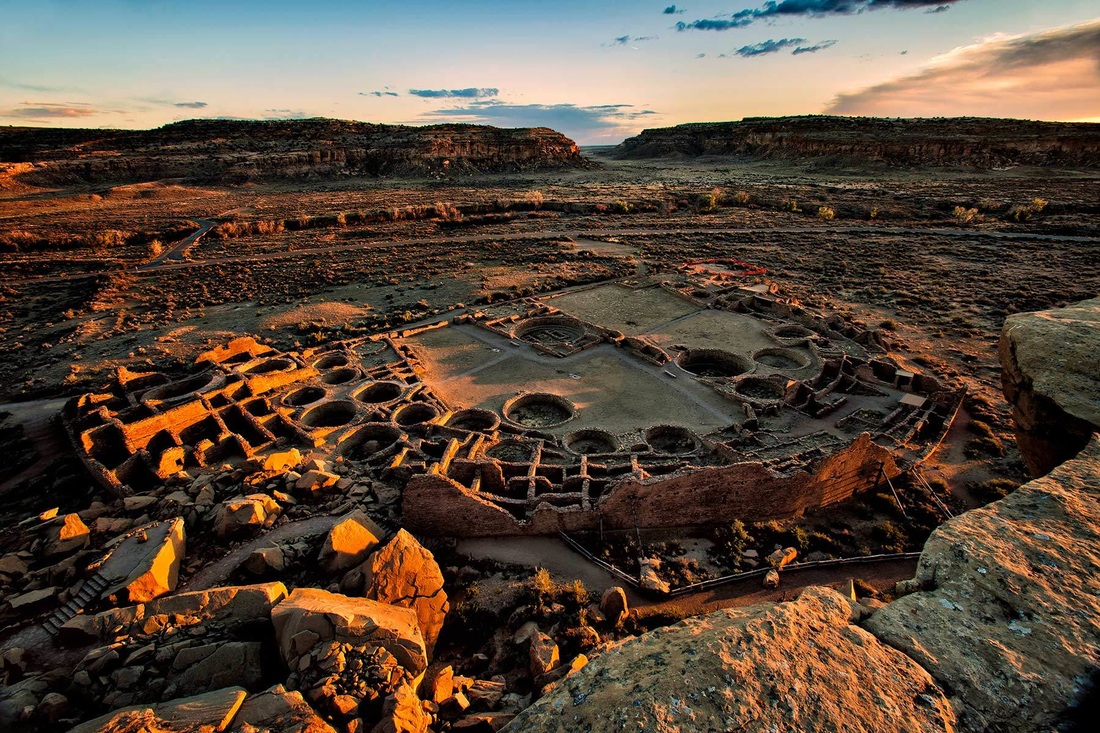
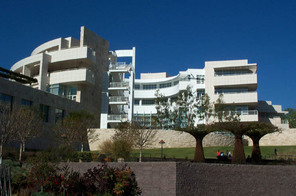
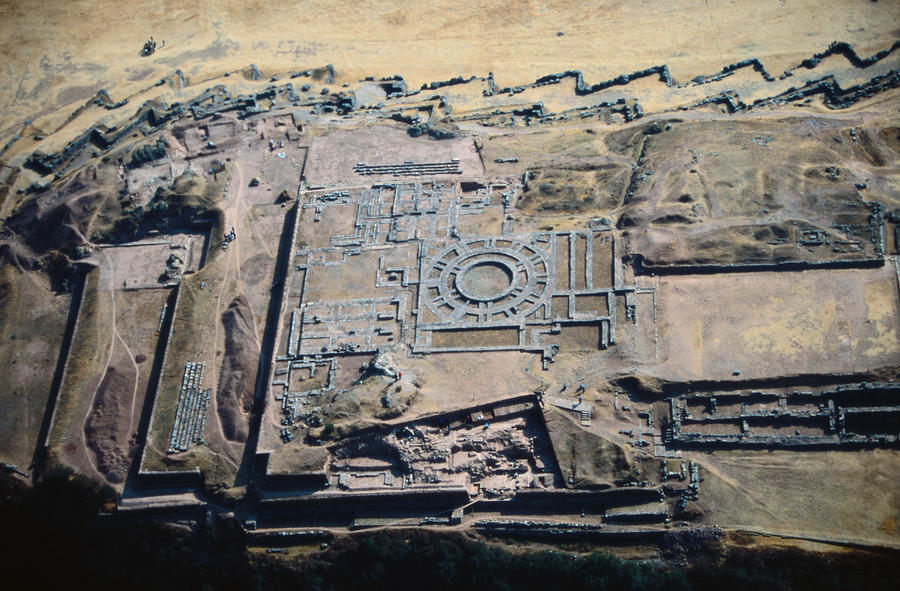
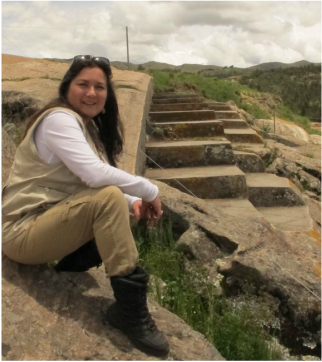

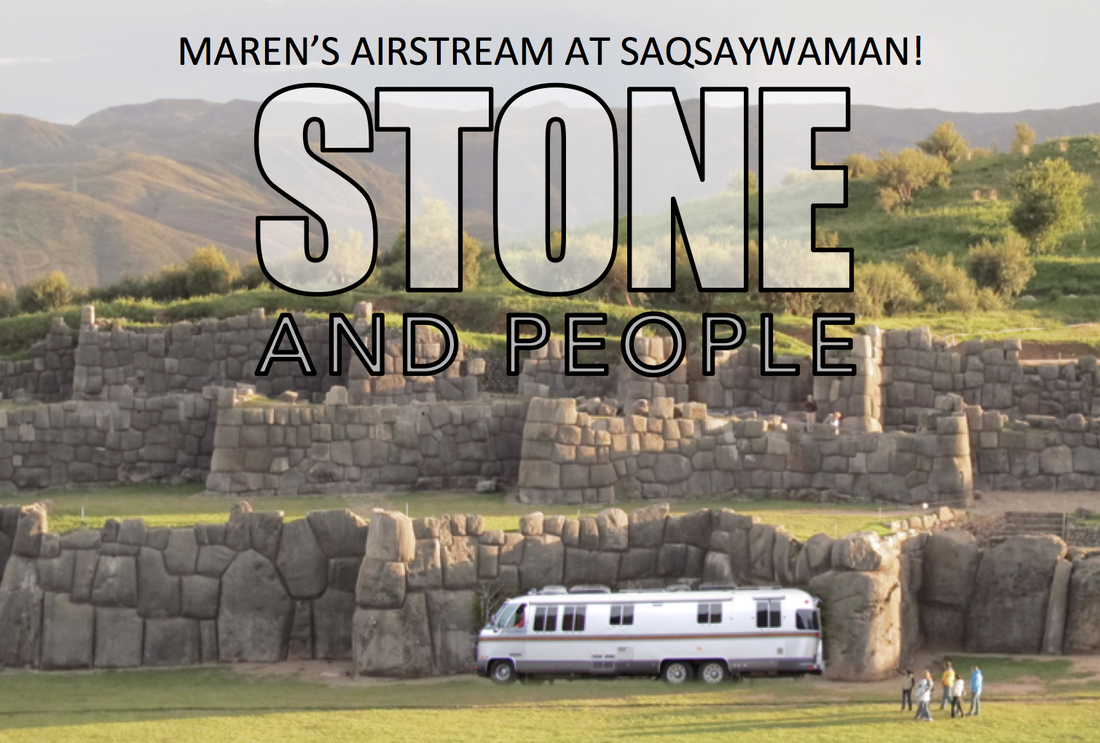
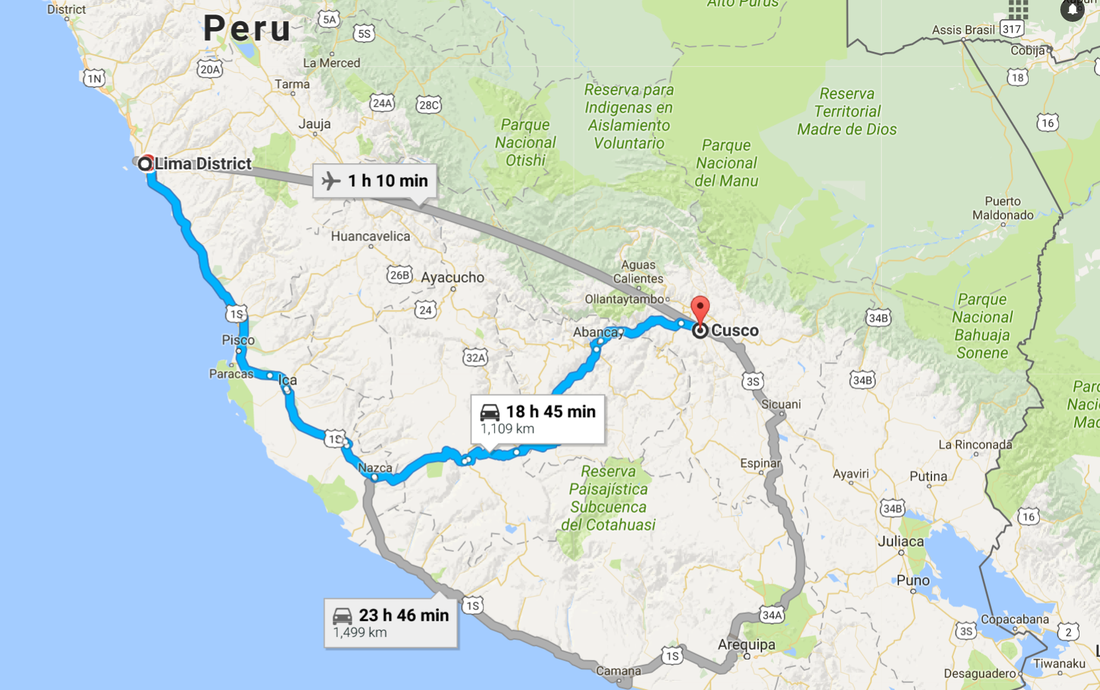
 RSS Feed
RSS Feed
